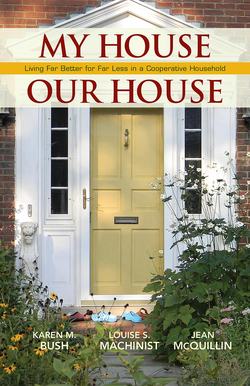Читать книгу My House Our House - Karen M. Bush - Страница 7
На сайте Литреса книга снята с продажи.
ОглавлениеForeword
Ahh, the longevity revolution! Never have there been so many old people in such good shape in any previous generation. When they say “60 is the new 40” (or some variation of this ridiculous phrase), it means the course of our lives is remaining in play longer. It’s a whole new game now, and we’re having to make up the rules as we go along. The good news is, we have more years to try new things, prepare our legacy, enrich our experiences – and cultivate relationships that make us wealthy beyond measure.
But as we look forward to this promising phase of life, we start asking ourselves, Where will we live? How will we live? Most of us know we don’t want assisted living or independent living or any of the other categories of “senior housing” we know from caring for our parents. We can’t picture ourselves subject to the management, the rules, the institutional-ness. We can’t picture ourselves in the lobby of those places listening to the Stones on our iPhone. Yet we can’t avoid the questions of where and how, as our needs change – because change they will.
I’ve spent the last twenty years working at better options, designing ways for people to stay in their own homes longer, if they wish, by making simple structural and other adaptations. It’s part of a concept called Aging in Place. My career has focused on making our homes the right places to grow old with dignity. One thing I have learned is that aging with dignity is more complex than just space design. Not only is every house different, but every household, every family, every neighborhood and community is different too. Every factor has an impact on one’s quality of life. And not all of us want to – or can afford to – stay in our home for the long run.
People who know of my work often tell me their “later-in-life daydreams,” that ideal living arrangement that’s out there somewhere. Many describe a compound with their own space but the proximity of friends. On the other hand, they don’t want it to be like a group house in college, with little privacy or boundaries. It always comes down to, How can I have my privacy without having to live alone?
The three authors of My House Our House had their own daydreams as well. And they took action. With intelligence, open minds and a sense of adventure, these members of the Boomer generation crafted an alternative living arrangement they call cooperative householding. And now, many years into their successful experiment, they’re here to give us the benefit of their experience. Something like this concept may have been in the back of your mind a few times . . . or almost the subject of a conversation with some friends. This book moves past your daydreams and past the hard part of exercising your imagination, to offer concrete steps for going forward.
My House Our House is a map to a newly opened frontier.
Some say Boomers like to break the rules, but Karen, Louise and Jean teach us to make new rules – good, thoughtful rules, tested by people you can respect. Don’t be snowed by the warm context and fun spirit; this book covers sophisticated and radical ideas. The mark of good communicating is making the complex and important clear and seemingly simple. They write eloquently and thoroughly about details that would not occur to me. They cover tough issues I might avoid. Their book is a template for a good process. They deal with finding and purchasing a house, finding partners, setting up finances, combining furnishings and household routines . . . and most importantly: how you can know if cooperative householding is for you.
Beyond bringing the logistics of everyday living to daylight in this new and multi-faceted relationship, My House Our House is a self-aware discussion for all kinds of relationships – business, family, friends – with value beyond its stated purpose. If you follow these guiding ideas you will be rewarded no matter where you move, with whom you live or even with whom you work.
We Boomers changed every institution we touched throughout our lives. It is not just the size of our cohort; we redefined relationships, families, work. Life. We all want to be independent. Independence means choices and control. But, as we’re now discovering, it doesn’t require living alone.
And that’s what makes Karen, Louise and Jean’s story great.
I know the longevity revolution means that change is inevitable. That can be unsettling. We live longer, so our homes must adapt and change. The very concept of households will change as well. Cooperative householding may be a welcome island in the chaos. This book charts the course there. If you have had daydreams – or nightmares – about where you will live in the next stage of your life, read this book. Let it guide you forward into a new and thought-provoking world of possibilities.
Louis Tenenbaum
Aging in Place strategist and consultant, founder of The Aging In Place Institute, author of Aging in Place 2.0. www.louistenenbaum.com
